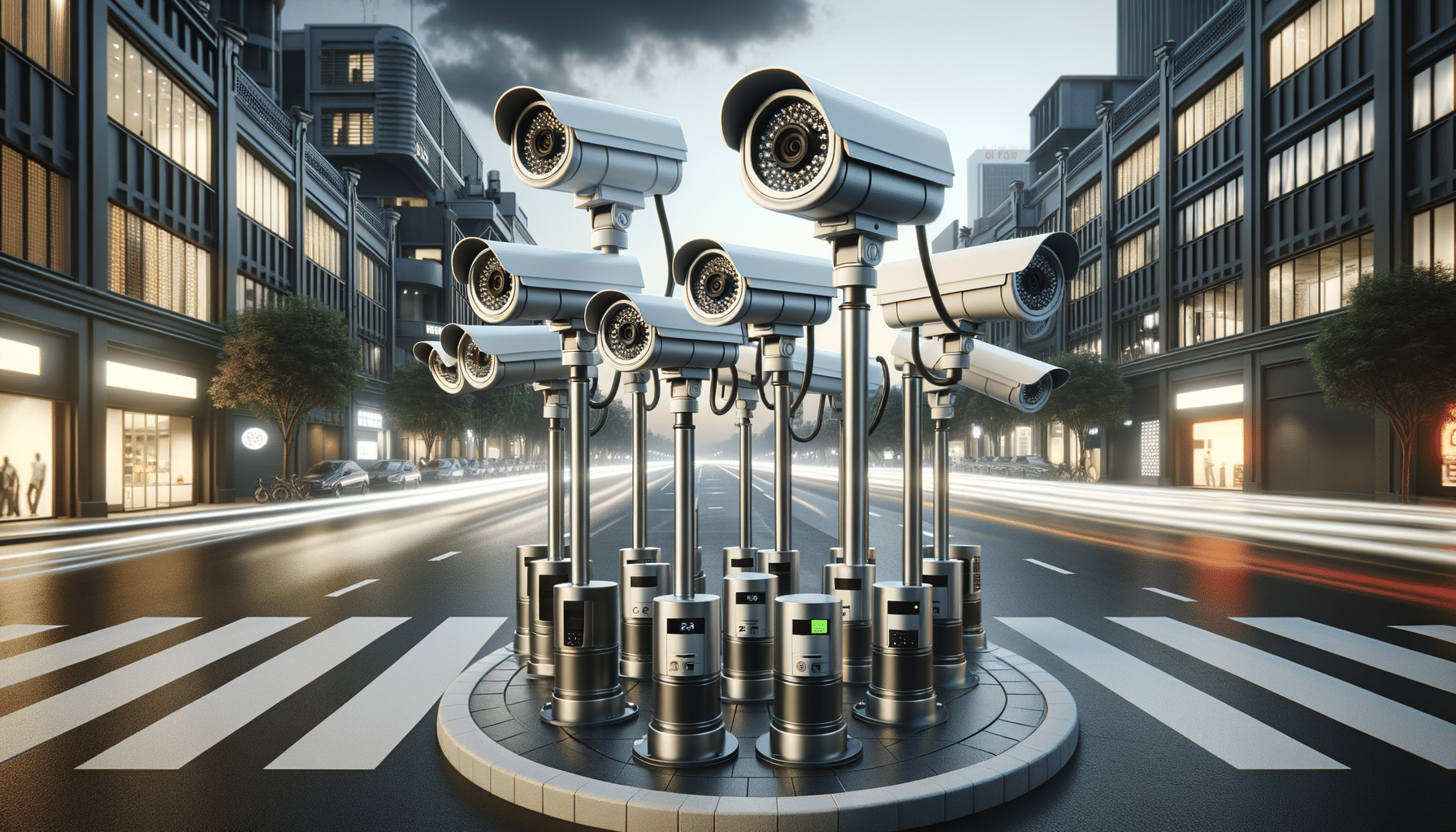
Enhancing Security with Smart Surveillance Cameras
The Importance of Security & Surveillance Cameras
In today’s world, security and surveillance cameras have become an integral part of safeguarding both residential and commercial properties. They not only provide a sense of security but also serve as a deterrent to criminal activities. With the advancement in technology, these cameras have evolved from basic recording devices to smart systems that offer a range of features to enhance security measures.
Security cameras are crucial for monitoring activities in and around a property. They help in preventing unauthorized access and provide evidence in case of any incidents. The presence of cameras can deter potential intruders, reducing the likelihood of crimes such as theft and vandalism. Moreover, surveillance footage can be invaluable for law enforcement agencies during investigations.
The evolution of surveillance technology has introduced smart cameras that are connected via WiFi, allowing users to monitor their properties remotely. These cameras come equipped with features like motion detection, night vision, and cloud storage, making them an excellent choice for enhancing security. The ability to access live feeds and recorded footage through smartphones or computers has made it easier for individuals to keep an eye on their properties at all times.
Types of Surveillance Cameras
There are several types of surveillance cameras available, each designed to meet specific security needs. Understanding the different types can help in selecting the right system for your property.
One of the most common types is the dome camera, known for its discreet design. These cameras are ideal for indoor use and are often used in retail stores and offices. Their dome shape makes it difficult for onlookers to determine the direction of the camera, adding an extra layer of security.
Bullet cameras are another popular choice, especially for outdoor use. Their long, cylindrical shape allows for a more focused field of view, making them suitable for monitoring specific areas such as entrances and exits. They are typically weatherproof, ensuring durability in various environmental conditions.
PTZ (Pan-Tilt-Zoom) cameras offer flexibility with their ability to rotate horizontally and vertically, as well as zoom in and out. These cameras are perfect for large areas that require constant monitoring, such as parking lots and warehouses.
Finally, there are smart cameras that integrate with home automation systems. These cameras offer advanced features such as facial recognition, two-way audio, and integration with virtual assistants, providing a comprehensive security solution.
Benefits of Smart Surveillance Systems
Smart surveillance systems have revolutionized the way we approach security. These systems offer numerous benefits that traditional cameras cannot match.
One of the primary advantages is remote access. With smart cameras connected via WiFi, users can access live feeds and recorded footage from anywhere in the world. This feature is particularly beneficial for business owners and frequent travelers who wish to monitor their properties at all times.
Another significant benefit is the integration with other smart devices. Smart cameras can be connected to home automation systems, allowing users to control lights, alarms, and other devices remotely. This integration provides a more cohesive and efficient security system.
Smart cameras also offer advanced features such as motion detection and alerts. These features notify users of any unusual activity, enabling them to take immediate action. Additionally, many smart cameras provide cloud storage options, ensuring that footage is securely stored and easily accessible.
Overall, smart surveillance systems offer a more flexible, efficient, and reliable security solution, making them an excellent investment for both residential and commercial properties.
Considerations When Choosing a Security Camera
Selecting the right security camera involves considering several factors to ensure that it meets your specific needs.
Firstly, determine the location where the camera will be installed. Indoor cameras often have different features compared to outdoor cameras, such as weatherproofing and night vision capabilities. Understanding the environment will help in choosing a camera with the appropriate specifications.
Next, consider the resolution of the camera. Higher resolution cameras provide clearer and more detailed images, which can be crucial for identifying individuals or incidents. However, they may also require more storage space, so it’s essential to balance quality with storage capabilities.
Another critical factor is the camera’s connectivity options. WiFi-enabled cameras offer the convenience of remote access, but they may be susceptible to network issues. Wired cameras, on the other hand, provide a more stable connection but may require more complex installation.
Finally, consider the cost and features of the camera. While advanced features such as facial recognition and cloud storage can enhance security, they may also increase the price. It’s essential to evaluate the necessary features against the budget to make an informed decision.
Future Trends in Surveillance Technology
The field of surveillance technology is continuously evolving, with new trends emerging that promise to further enhance security measures.
One of the most exciting trends is the integration of artificial intelligence (AI) in surveillance systems. AI can analyze footage in real-time, identifying unusual patterns or behaviors and alerting users to potential threats. This technology can significantly reduce the response time to incidents, providing a more proactive security approach.
Another trend is the development of cloud-based surveillance solutions. These systems offer scalable storage options, allowing users to store large volumes of footage without the need for physical storage devices. Cloud-based systems also provide enhanced security features, such as data encryption and secure access controls.
Additionally, the rise of smart cities is driving the demand for more advanced surveillance systems. These systems are designed to integrate with city infrastructure, providing comprehensive monitoring and analysis capabilities. The data collected from these systems can be used to improve city planning, traffic management, and public safety.
As technology continues to advance, we can expect to see even more innovative solutions in the field of surveillance, offering enhanced security and peace of mind for individuals and businesses alike.


